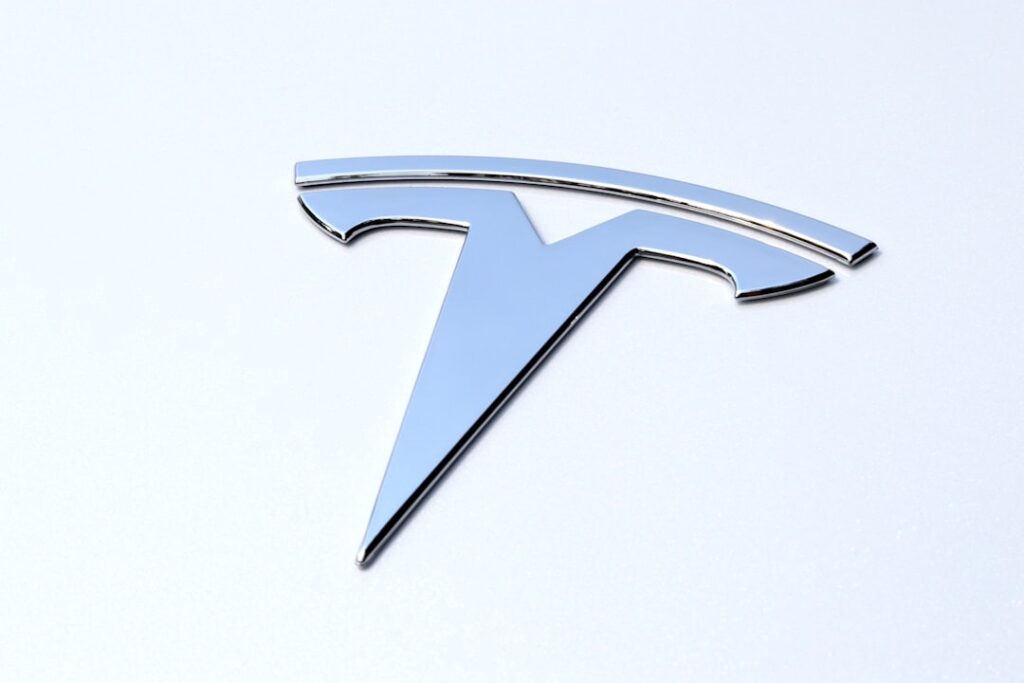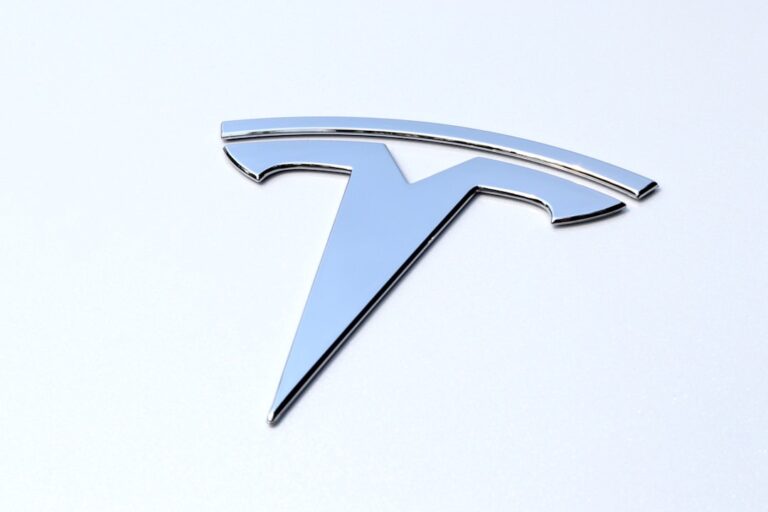
**Title: Tesla’s Robotaxi Revenue Projections: A Glimpse into the Future of Autonomous Mobility** **Date: October 10, 2023** —
Key Takeaways
- Tesla’s robotaxi revenue projections are expected to soar in the coming years, making it a key focus for investors and industry analysts.
- Factors driving the soaring revenue projections include the potential for widespread adoption of autonomous vehicles, cost savings for consumers, and the ability for Tesla to leverage its existing fleet of vehicles.
- Potential challenges and risks for Tesla’s robotaxi business include regulatory hurdles, technological limitations, and competition from other companies in the autonomous vehicle industry.
- The impact on Tesla’s stock performance is expected to be significant, with the success of the robotaxi business potentially driving up the company’s valuation.
- When compared with competitors in the autonomous vehicle industry, Tesla’s robotaxi business is seen as a leader due to its existing fleet of vehicles and advanced autonomous driving technology.
Tesla, the electric vehicle (EV) pioneer led by CEO Elon Musk, has been making headlines recently with its ambitious projections for its Robotaxi service. The company envisions a future where autonomous vehicles operate as a fleet of shared taxis, generating substantial revenue while transforming urban mobility. According to recent estimates, Tesla’s Robotaxi service could potentially generate upwards of $100 billion annually by the end of the decade.
This projection is not merely speculative; it is grounded in Tesla’s advancements in artificial intelligence, machine learning, and its extensive data collection from its existing fleet of vehicles. The concept of Robotaxis is not new, but Tesla’s approach is unique.
This innovation could disrupt the transportation industry, offering a more efficient and cost-effective alternative to conventional taxi services. As cities grapple with congestion and pollution, the potential for a sustainable and scalable Robotaxi service presents an enticing opportunity for both Tesla and urban planners alike.
Factors Driving the Soaring Revenue Projections
Several factors contribute to the optimistic revenue projections for Tesla’s Robotaxi service. First and foremost is the rapid advancement of autonomous driving technology. Tesla has invested heavily in developing its FSD capabilities, which have shown significant improvements over the years.
The company’s ability to collect vast amounts of real-world driving data from its fleet allows it to refine its algorithms continuously, enhancing safety and efficiency. As these technologies mature, the operational costs associated with running a Robotaxi fleet are expected to decrease, further boosting profitability. Another critical factor is the growing demand for shared mobility solutions.
Urban populations are increasing, leading to heightened traffic congestion and a greater need for efficient transportation options. Consumers are increasingly favoring ride-sharing services over car ownership due to convenience and cost-effectiveness. Tesla’s Robotaxi service aligns perfectly with this trend, offering an on-demand transportation solution that could appeal to a broad demographic.
Additionally, as more people become environmentally conscious, the allure of an electric, autonomous taxi service becomes even more pronounced.
Potential Challenges and Risks

Despite the promising outlook for Tesla’s Robotaxi revenue, several challenges and risks could impede its success. One significant concern is regulatory hurdles. The deployment of autonomous vehicles on public roads requires navigating a complex web of local, state, and federal regulations.
While Tesla has made strides in gaining regulatory approval for its FSD technology, the pace of regulatory change may not keep up with technological advancements. This lag could delay the rollout of the Robotaxi service and hinder revenue generation. Moreover, safety concerns surrounding autonomous vehicles remain a hot topic.
High-profile accidents involving self-driving cars have raised questions about their reliability and safety. Public perception plays a crucial role in the acceptance of autonomous technology; any incidents could lead to increased scrutiny from regulators and consumers alike. Tesla must not only ensure that its vehicles are safe but also effectively communicate their safety features to build trust among potential users.
(Source: National Highway Traffic Safety Administration)
Impact on Tesla’s Stock Performance
| Metrics | Impact on Tesla’s Stock Performance |
|---|---|
| Vehicle Deliveries | Positive vehicle delivery numbers often lead to an increase in stock price. |
| Revenue and Earnings | Higher revenue and earnings can positively impact Tesla’s stock performance. |
| Production Efficiency | Improvements in production efficiency can lead to positive investor sentiment and stock price increase. |
| Regulatory Changes | Changes in regulations related to electric vehicles can impact Tesla’s stock performance. |
| Competition | Increased competition in the electric vehicle market can negatively impact Tesla’s stock performance. |
The anticipated success of Tesla’s Robotaxi service has significant implications for the company’s stock performance. Investors are closely monitoring developments in this area, as successful implementation could lead to substantial revenue growth and increased market share in the automotive industry. Analysts predict that if Tesla can achieve its ambitious goals for the Robotaxi service, it could bolster the company’s valuation significantly.
However, stock performance is inherently volatile and influenced by various external factors. Market sentiment can shift rapidly based on news related to regulatory changes, technological advancements, or competitive pressures. While the potential for growth is substantial, investors must remain cautious and consider the risks associated with such a transformative business model.
The balance between optimism and skepticism will likely shape Tesla’s stock trajectory in the coming years.
Comparison with Competitors in the Autonomous Vehicle Industry
Tesla is not alone in pursuing autonomous vehicle technology; several competitors are vying for dominance in this burgeoning market. Companies like Waymo, Cruise, and Aurora are also developing their own autonomous driving systems and exploring similar business models. Each competitor brings unique strengths and challenges to the table, making it essential for Tesla to differentiate itself.
Waymo, a subsidiary of Alphabet Inc., has made significant strides in autonomous driving technology and has already launched a limited Robotaxi service in select areas. Their extensive testing and experience in real-world conditions give them a competitive edge. However, Tesla’s advantage lies in its existing customer base and brand loyalty among EV enthusiasts.
The company’s ability to integrate its autonomous technology into its already popular vehicles could provide a significant advantage over competitors who are starting from scratch.
Regulatory and Legal Considerations
Navigating the regulatory landscape is one of the most critical aspects of launching a successful Robotaxi service. Different regions have varying regulations regarding autonomous vehicles, which can complicate expansion efforts for companies like Tesla. In some areas, local governments may be hesitant to allow fully autonomous vehicles on public roads due to safety concerns or lack of infrastructure.
Additionally, legal liability issues surrounding autonomous vehicles pose another challenge. In the event of an accident involving a Robotaxi, determining liability can be complex. Will it fall on Tesla as the manufacturer, or will it be attributed to software malfunctions?
These questions remain largely unanswered and could lead to legal battles that may hinder progress in deploying Robotaxis.
Future Growth Opportunities for Tesla’s Robotaxi Business
Looking ahead, there are numerous growth opportunities for Tesla’s Robotaxi business that could further enhance its revenue potential. One avenue is expanding into new markets both domestically and internationally. As cities around the world seek innovative solutions to transportation challenges, Tesla’s Robotaxi service could find eager adopters in urban centers grappling with congestion and pollution.
Moreover, partnerships with municipalities or ride-sharing platforms could facilitate quicker adoption of the Robotaxi model. Collaborating with local governments can help address regulatory concerns while providing valuable insights into consumer preferences and needs. Additionally, as technology continues to evolve, integrating advanced features such as vehicle-to-vehicle communication or enhanced safety protocols could further differentiate Tesla’s offering from competitors.
Conclusion and Key Takeaways
In conclusion, Tesla’s projections for its Robotaxi service present an exciting glimpse into the future of transportation. With advancements in autonomous driving technology and growing demand for shared mobility solutions, the potential for substantial revenue generation is evident. However, challenges such as regulatory hurdles and safety concerns must be addressed to ensure successful implementation.
As investors keep a close eye on Tesla’s stock performance amid these developments, it is crucial to recognize both the opportunities and risks associated with this transformative business model. By navigating these complexities effectively, Tesla could solidify its position as a leader in the autonomous vehicle industry while reshaping urban mobility for generations to come. — **Keywords:** Tesla Robotaxi revenue projections, autonomous vehicles, electric vehicle market, regulatory challenges, stock performance analysis **Further Reading:**
1.
[Tesla’s Full Self-Driving Technology](https://www.tesla.com/full-self-driving)
2. [Waymo’s Autonomous Vehicle Developments](https://waymo.com)
3.
mckinsey.com/industries/automotive-and-assembly/our-insights/the-future-of-urban-mobility)
In a recent article discussing Tesla’s robotaxi revenue projections, it was noted that the company’s stock has fallen for the seventh week in a row source. This decline comes amidst significant scrutiny of Tesla’s performance in early 2025 source. Additionally, a former Apple leader had some blunt words for Elon Musk and Tesla source, adding to the challenges the company may face in achieving its ambitious revenue projections.
Click for the latest Tesla products ready to ship right now!
FAQs
What are Tesla robotaxi revenue projections?
Tesla robotaxi revenue projections refer to the estimated income that Tesla expects to generate from its autonomous ride-hailing service, known as the “robotaxi” network. These projections are based on various factors such as the number of vehicles in the fleet, the potential demand for autonomous rides, and the pricing strategy for the service.
How are Tesla robotaxi revenue projections calculated?
Tesla robotaxi revenue projections are calculated based on a combination of factors, including the number of autonomous vehicles in the fleet, the average number of rides per vehicle per day, the pricing per ride, and the operating costs associated with running the robotaxi network. These projections also take into account potential growth in demand for autonomous rides and the potential impact of regulatory and market factors.
What factors influence Tesla robotaxi revenue projections?
Several factors can influence Tesla robotaxi revenue projections, including the cost of autonomous vehicle technology, the regulatory environment for autonomous vehicles, consumer acceptance of autonomous ridesharing, competition from other ride-hailing services, and the potential impact of economic and market conditions on demand for autonomous rides.
Are Tesla robotaxi revenue projections reliable?
Tesla robotaxi revenue projections are based on various assumptions and estimates, and as such, they may not always be entirely reliable. Factors such as technological advancements, regulatory changes, and shifts in consumer behavior can all impact the accuracy of revenue projections. It’s important to consider these factors when evaluating the reliability of Tesla’s robotaxi revenue projections.
What are the potential risks associated with Tesla robotaxi revenue projections?
Potential risks associated with Tesla robotaxi revenue projections include technological challenges in developing and deploying autonomous vehicles, regulatory hurdles related to autonomous ride-hailing services, competition from other companies in the autonomous vehicle space, and uncertainties in consumer adoption of autonomous ridesharing. These risks can impact the actual revenue generated by Tesla’s robotaxi network.
